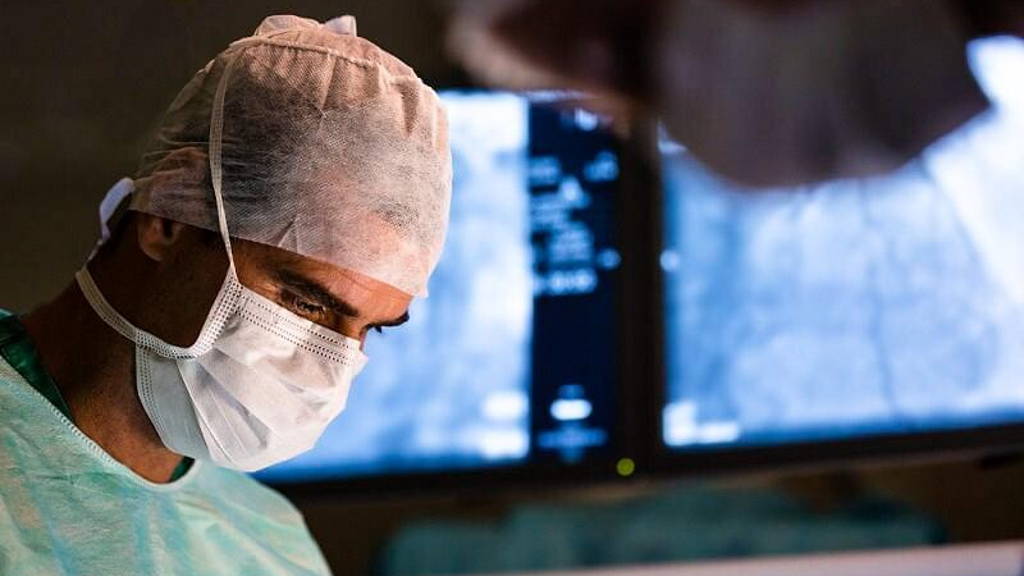Clinical trials and studies are absolutely neccecary to gauge the safety and effectiveness of new medical devices, procedures, and medications. But acccording to a 2014 report prepared for the U.S. Department of Health & Human Services, certain types of clinical trials can cost up to $115.3 million per study. With thousands of new studies being conducted each year, costs of clinical trials are fast approaching an unsustainable level.
Not only can clinical trials be costly, they can be risky because of the human involvement - for example, humans can be subjective about their experiences during a trial. Also, they can produce different results than when the treatment is applied in the real world. Using advanced simulations researchers are now starting to enhance these trials, working to protect participants, increase the likelihood of reliable test results, and uncover benefits and risks associated with new developments.
Already simulations backed by high-performance computing (HPE) technologies are merging data from historical trials, electronic health records (EHRs), and patients themselves to conduct realistic and cost-efficient virtual studies. In time clinical trials might take place in simulated environments, trying out medication on billions of different fysiological conditions.
Blog-writer Bill Mannel (VP & GM HPC & Big Data and IoT Solutions for HPE Servers) believes big data is key to furthering modeling and simulation techniques, allowing medical professionals to hone in on evidence rather than assumptions to make more accurate medical decisions. As predictability is a fundamental component of clinical trials, researchers rely heavily on predictive models to identify implications across a range of assumptions. Realistic simulations have become essential in developing breakthrough medical advancements as researchers use them to replicate a variety of conditions in order to predict the likelihood of a successful treatment outcome.
For success simulation as part of clinical trials also needs data sharing. Applied Clinical Trials notes that medical experts must eliminate “traditional research silos” that inhibit this development. Collaboration and sharing of data between development experts from various disciplines will be encouraged by successful proofs-of-concept. Their combined knowledge in turn ensures that simulated testing will support accurate, well-researched findings throughout the trial.
Bottom line: modeling and simulation techniques are at the very core of the breakthrough capabilities of medicine. They will offer endless possibilities not only for scientific discovery but for an increased quality of life. Researchers that use data-driven simulations to observe the effects of drugs, treatments, and procedures, will minimize risks to trial participants and quickly identify and replicate positive outcomes.
Not only can clinical trials be costly, they can be risky because of the human involvement - for example, humans can be subjective about their experiences during a trial. Also, they can produce different results than when the treatment is applied in the real world. Using advanced simulations researchers are now starting to enhance these trials, working to protect participants, increase the likelihood of reliable test results, and uncover benefits and risks associated with new developments.
Already simulations backed by high-performance computing (HPE) technologies are merging data from historical trials, electronic health records (EHRs), and patients themselves to conduct realistic and cost-efficient virtual studies. In time clinical trials might take place in simulated environments, trying out medication on billions of different fysiological conditions.
Living Heart Project
Though this isn't yet the case, we are getting there, combining big data and data analytics with HPC and artifical intelligence. An initiative called the Living Heart Project is working to harness these large volumes of medical data in order to produce the world’s first 3D models of the human body, enabling researchers to develop more effective medical devices, drugs, and procedures than ever before. The Project’s most recent innovation includes the Living Heart Human Model, which has advanced the use of simulation to deliver safe and effective cardiovascular devices and clinical treatments.Blog-writer Bill Mannel (VP & GM HPC & Big Data and IoT Solutions for HPE Servers) believes big data is key to furthering modeling and simulation techniques, allowing medical professionals to hone in on evidence rather than assumptions to make more accurate medical decisions. As predictability is a fundamental component of clinical trials, researchers rely heavily on predictive models to identify implications across a range of assumptions. Realistic simulations have become essential in developing breakthrough medical advancements as researchers use them to replicate a variety of conditions in order to predict the likelihood of a successful treatment outcome.
Pharma benefits from simulations
Even more than research institutes, it's pharmaceutical companies that will benefit significantly from these innovations. A study conducted by the Association of the British Pharmaceutical Industry (ABPI) shows pharmaceutical researchers are investing huge amounts of time and money into medicinal trials. But only 10 percent of medications is ever approved, while the development process can take up to a decade. With advanced analytics and modeling, virtual models can now be used to monitor the body’s response to experimental medications in real-time. The ability to simulate clinical testing not only saves valuable resources, it allows pharmaceutical companies to streamline trial design, investigate a wide range of variables, and improve outcomes, which speeds time-to-market.For success simulation as part of clinical trials also needs data sharing. Applied Clinical Trials notes that medical experts must eliminate “traditional research silos” that inhibit this development. Collaboration and sharing of data between development experts from various disciplines will be encouraged by successful proofs-of-concept. Their combined knowledge in turn ensures that simulated testing will support accurate, well-researched findings throughout the trial.
Bottom line: modeling and simulation techniques are at the very core of the breakthrough capabilities of medicine. They will offer endless possibilities not only for scientific discovery but for an increased quality of life. Researchers that use data-driven simulations to observe the effects of drugs, treatments, and procedures, will minimize risks to trial participants and quickly identify and replicate positive outcomes.






